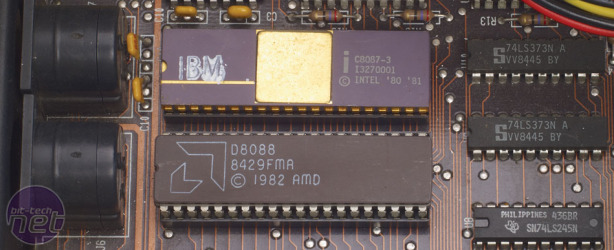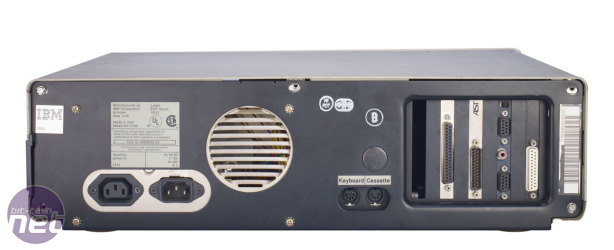IBM Makes Its Exit
Not only did graphics cards become affordable, but the popularity of cheap clone machines, as well as improvements in silicon fabrication processes and manufacturing, also dramatically reduced the cost of the PC.The end result was a computer standard that was surprisingly successful. ‘Who’d have thought that everybody could have a word processor?’ asks Muldoon. ‘Before, these were very expensive machines – the ones with the inkjet printers were around £20,000.’ The declining cost of PCs has also amazed Wanduragala. ‘What amazes me is how the price has collapsed – we’d never have guessed that PCs would be available in Tesco.’
IBM continued building PCs until 2004, when it eventually sold off its PC and laptop divisions to Lenovo in China. Why did IBM abandon the hugely successful product that it was responsible for creating? ‘I was really saying we should have got out of PCs ten years earlier,’ admits Muldoon, ‘it patently wasn’t making money. It’s just difficult to make money in a commoditised market. It requires a degree of skill, which is different to the skill sets in IBM.’
Put simply, the skill sets in IBM are much more geared towards intellectual property and innovation than physical products. The PC isn’t the only product that it’s later abandoned – the same thing happened with punch card machines, typewriters and delicatessen scales.
‘In the 1960s, Tom Watson Junior said that he’d been chief executive for ten years and IBM wasn’t selling one product that my father sold,’ says Muldoon. ‘So, within ten years, he’d turned the company from a punch card company into a computer company, and now that continues.
‘IBM doesn’t make products – it’s more of a machine that wanders through history, picking up technology, developing technology and then using it to do exactly what Tom’s father was trying to do when he joined in 1914, which is to apply the technology to the customer. The key differences between the company now and then,’ he continues, ‘is that in 1914 it would build a machine and a salesman would go around and say, do you want one of these? Now they go to the customer and say, what are you trying to do?’
Will IBM ever build another personal computer? ‘IBM will make something,’ says Muldoon, ‘but I bet it won’t be a personal computer. It will be something of a groundbreaking nature. You know, IBM invented the mainframe computer, bar codes and so on. It won’t be a PC, and it won’t be a mobile phone because, frankly, LG, HTC and Samsung do it better – and there’s no innovation in it. What IBM will do is stitch these together – that’s where the innovation is.’
Going full circle
The irony of the situation is that after revolutionising the PC, computing is now increasingly turning towards cloud computing, a system that has more in common with mainframes and terminals than with PCs.‘It’s very cyclical,’ says Muldoon. ’I’ve seen it go from terminal, to standalone PC, to PC connected to a mainframe, to PC connected to a server and then coming back to PCs. The cloud is just that cycle coming around again. It’s all about connectivity, in that there’s the cycle of the personal computer standing alone, and then you get more power from somewhere else, connect it and so on.’
There is, however, one crucial difference between mainframes and the cloud, other than the fact that one is online and one isn’t.
‘What’s different from the old terminals is data creation,’ points out Wanduragala. ‘Data is now created on the edge in huge quantities, which didn’t happen with the terminal devices. The processing is in the centre, but the data creation – people taking pictures, audio files and so on – is happening on the edge.’
Thanks
Bit-tech would like to thank the following people for their help with this article: Tim Beattie for the loan of the IBM PC 5150; Terry Muldoon, Tikiri Wanduragala and Anne Kristine Janson at IBM for showing us the archives and answering our questions; Robin Bithrey at Cherry for quickly helping out with the loan of an XT keyboard.
MSI MPG Velox 100R Chassis Review
October 14 2021 | 15:04











Want to comment? Please log in.